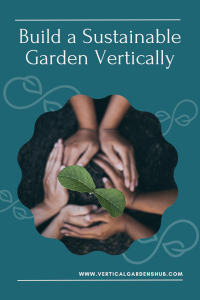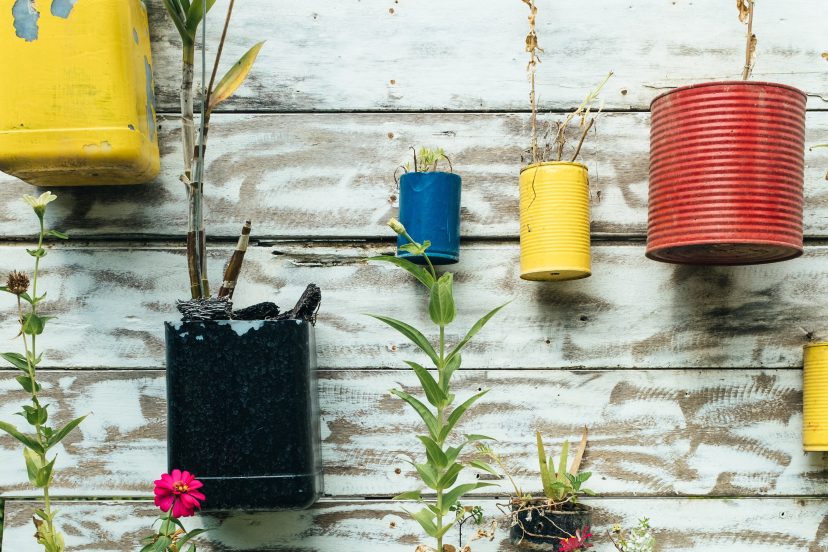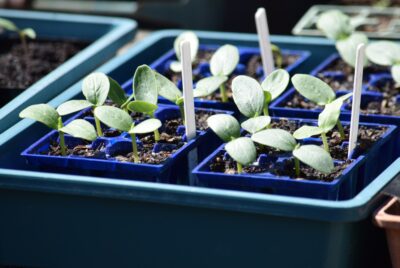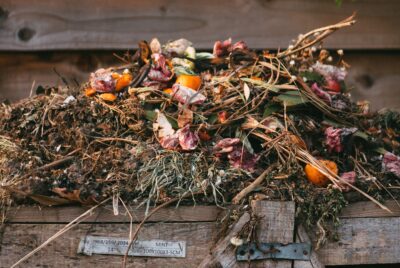Build a Sustainable Garden Vertically
Using sustainability in vertical gardening is a responsibility towards our planet and future generations. Sustainable garden practices ensure that we create and maintain green spaces that have a positive impact on the environment while minimizing our ecological footprint. By choosing eco-friendly materials and conserving water, we reduce waste and promote a healthier ecosystem. Sustainability in vertical gardening allows us to enjoy the beauty and benefits of greenery while actively contributing to a greener, more sustainable world for all living beings.
Contents Covered
- Choosing Sustainable Garden Materials
- Water Conservation Techniques
- Selecting Plants for a Sustainable Garden
- Composting and Organic Fertilizers
- Creating Biodiversity
- Vertical Garden Maintenance
- Energy-Efficient Lighting
- Vertical Gardening in Urban Areas
- DIY Vertical Gardening Projects
- Educational and Therapeutic Benefits
- Success Stories in Sustainable Vertical Gardening
Choose Sustainable Garden Materials
When embarking on creating your sustainable vertical garden, it’s crucial to select eco-friendly materials for your structures and containers. Use recycled or upcycled materials like old wooden pallets, plastic bottles, or metal containers to minimize waste and reduce your ecological footprint.
Avoiding harmful chemicals is also essential for sustainability. Choose planters made from natural materials such as clay or sustainably sourced wood. Ensure that any paints or finishes used are non-toxic and safe for both the environment and your plants.
Water Conservation Techniques
Efficient water usage is a hallmark of any sustainable garden. Implementing water conservation techniques can significantly reduce water waste and keep your garden thriving. Drip irrigation systems deliver water directly to the roots, minimizing evaporation and ensuring each plant gets the right amount of water.
Rainwater harvesting is another eco-friendly practice that can be used for your sustainable garden. Collect rainwater in barrels or containers during rainy periods and use it to water your plants during dry spells. This not only conserves water but also saves on your water bill.
Self-watering planters are a smart investment for sustainable vertical gardening. These containers come with a built-in reservoir that supplies water to the plants as needed, preventing overwatering and water runoff.
Selecting Plants for a Sustainable Garden
Choosing the right plants is essential for a successful and sustainable garden. Choose native and adaptive species that are well-suited to your climate. Native plants require less water and maintenance, as they are already acclimated to the local conditions.
Additionally, consider companion planting to naturally deter pests and promote healthy growth. Certain plant combinations work symbiotically, acting as natural pest repellents and providing mutual support.
For those looking to incorporate sustainable practices beyond aesthetics, consider growing edible plants. Vertical vegetable and herb gardens not only provide fresh produce but also reduce your reliance on store-bought items, cutting down on transportation emissions.
Composting and Organic Fertilizers
Sustainability extends to soil health as well. Start a composting system to recycle kitchen scraps and garden waste into nutrient-rich compost. Compost provides vital organic matter to the soil, improving its structure and fertility.
Choose organic fertilizers which release nutrients slowly, promoting long-term plant health without harming the environment. You can create your own organic fertilizers using compost or organic materials like eggshells, coffee grounds, and banana peels.
Creating Biodiversity
A sustainable garden should aim to attract and support various forms of life. Encourage pollinators like bees and butterflies by planting flowers rich in nectar. These pollinators play a crucial role in the reproduction of plants.
Incorporate wildlife-friendly elements such as bird feeders, bird baths, or birdhouses to attract feathered friends to your garden. Birds not only add to the charm of your garden but also help control pests naturally.
Maintaining biodiversity is essential for a resilient and healthy ecosystem. The more diverse your plant and animal life, the better your garden can manage challenges like pests and diseases.
Sustainable Garden Maintenance
Proper maintenance is essential to keep your sustainable garden flourishing. Regular pruning and trimming are necessary to manage plant growth and ensure an aesthetically pleasing display. However, avoid over-pruning, as it may stress the plants.
When dealing with pests or diseases, opt for natural pest management methods. Neem oil, garlic spray, and soap-water solutions are effective and eco-friendly remedies.
Regularly monitor your plants for signs of stress, nutrient deficiencies, or pest infestations. Early detection and intervention can prevent potential issues from becoming severe problems.
Energy-Efficient Lighting
For indoor sustainable gardens or those in areas with limited sunlight, energy-efficient lighting is a sustainable solution. LED grow lights provide the necessary spectrum for plant growth while consuming less electricity compared to traditional lighting options.
For an even greener approach, consider solar-powered lighting options. Solar lights harness energy from the sun during the day and provide illumination during the evening, reducing your energy consumption and carbon footprint.
Sustainable Gardens in Urban Areas
Vertical gardening offers exciting possibilities for enhancing urban spaces. In crowded cities, green areas can be scarce, leading to reduced air quality and limited access to fresh produce. Vertical gardens help combat these issues where sustainability practices can be used.
Community involvement in urban sustainable gardening projects fosters a sense of belonging and pride in green spaces. These projects can also provide locally grown produce, where access to fresh and healthy food is limited.
DIY Vertical Gardening Projects
Engaging in do-it-yourself (DIY) projects is not only fun but also allows you to be more sustainable in your gardening efforts. Get creative with your sustainable vertical garden installations using repurposed materials. Build your own structures using step-by-step guides to ensure stability and safety.
Explore the art of upcycling by transforming everyday household items into unique planters. You will be amazed at the array of items that can be repurposed to house your beloved plants.
Educational and Therapeutic Benefits
Vertical sustainability gardening offers various educational opportunities, especially for children. In schools or educational settings, a vertical garden can serve as a living classroom where students learn about sustainability, plant life cycles, and the importance of green spaces.
Furthermore, gardening has proven therapeutic benefits. Engaging with nature and nurturing plants can reduce stress, anxiety, and depression. It provides much-needed respite from our fast-paced lives.
Success Stories in Sustainable Gardens
Throughout the world, countless successful examples of sustainable vertical gardening can inspire us. From vertical farms producing fresh produce in urban environments to green walls purifying the air in office buildings, these projects highlight the potential and impact of sustainable gardening.
Vertical gardening, when done sustainably, not only beautifies spaces but also positively impacts the environment and community. By choosing eco-friendly materials, conserving water, and promoting biodiversity, you contribute to a greener and healthier world. Embrace the joy of sustainable gardens while being mindful of the planet, and watch as your vertical garden flourishes and thrives.

FAQs
Q: How do I start composting for my sustainable garden?
A. Composting is easy! Collect kitchen scraps like fruit peels and vegetable leftovers along with garden clippings and leaves. Create a compost pile or use a composting bin and let nature do the work.
Q: How can I make my garden more sustainable?
A. There are many ways to make your garden more sustainable. Start by using organic fertilizers and compost to enrich the soil naturally. Choose native and adaptive plant species that are well-suited to your climate and require less water and maintenance. Implement water-saving techniques like drip irrigation and rainwater harvesting. Avoid using pesticides and opt for natural pest control methods. Additionally, consider attracting pollinators and beneficial insects to enhance biodiversity.
Q: Can sustainable gardening be done in small spaces or in urban environments?
A. Absolutely! Sustainable gardening can be adapted to any space, whether it’s a small balcony, rooftop, or even indoor area. Vertical gardening, container gardening, and raised beds are excellent options for urban environments with limited space. These techniques allow you to grow a variety of plants, promote greenery, and contribute positively to the local environment.
Q: How does sustainable gardening benefit the environment and wildlife?
A. Sustainable gardening benefits the environment in several ways. By avoiding harmful chemicals, it prevents soil and water contamination, protecting local ecosystems. Planting native species enhances biodiversity, providing food and shelter for wildlife, and encouraging the presence of pollinators and beneficial insects. Sustainable gardens also absorb carbon dioxide, reducing greenhouse gas emissions and helping combat climate change.
Q: Can sustainable gardening save me money overall?
A. Yes, sustainable gardening can save you money eventually. While initial setup costs for eco-friendly materials and water-saving systems may be higher, the reduced need for synthetic fertilizers, pesticides, and excessive water usage will lead to long-term cost savings. Additionally, growing your own fruits and vegetables can cut down on grocery expenses, especially if you choose edible plants for your sustainable garden.





